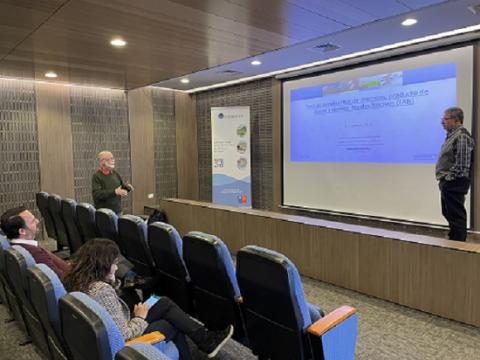
The clinical potential of his research on “Paralyzing shellfish toxins resulting from harmful algal blooms (red tide)” was addressed by Dr. Nelson Lagos in the talk he offered to researchers, academics and students in the REMS Research Centers Building Auditorium, from the University of Santiago.
The conference, which took place on the afternoon of Wednesday, September 27, is part of the Cycle of Seminars that the Center for Nanoscience and Nanotechnology, CEDENNA, carries out monthly as a contribution to the dissemination of scientific knowledge in the university community.
Dr. Lagos, a prominent academic and researcher at the University of Chile, explained in detail his extensive work with the toxins of red tide dinoflagellates.
He discovered phycotoxin in freshwater filamentous microalgae after searching for an answer to why people got sick after ingesting them. He observed that these cyanobacteria or microalgae are capable of producing up to a dozen toxins. He characterized, separated and purified them until obtaining Neosaxitoxin.
Neosaxitoxin was patented and has been used in various pathologies at a peripheral level, such as tension headache, lower esophageal sphincter dysfunction and knee arthroplasty, among others. Furthermore, in doses of 20 micrograms it allows postoperative pain management for up to 72 hours and has no side effects, unlike traditional local anesthetics whose action disappears after six hours.
- Log in to post comments







